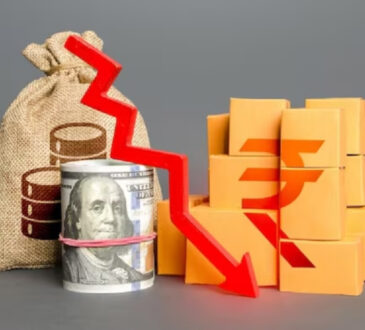
Regulated neobanks are growing quickly in jurisdictions such as London
Getty Images
Banking is not the obvious industry in which to launch a brand-new business given its exacting regulatory standards and other daunting barriers to entry. But the past 10 years has nonetheless seen an explosion in new digital players entering the industry, many of which are now major challengers. In the UK, for example, downloads of banking apps from new players last year outnumbered those from legacy banks.
“We were lucky with our timing,” says Salim Dhanani, the co-founder and CEO of Pave Bank, a Singapore-headquartered neobank which opened its doors at the end of 2023. “The world was just getting much more comfortable with digital products, and the advent of generative artificial intelligence has helped us to build and scale the bank.”
Like other neobanks, Pave, which is today announcing a $39 million Series A financing round, has worked hard to establish itself in a new niche of the banking industry. It aims to provide a one-stop-shop for organisations that want to use both traditional currency and digital assets. It therefore offers commercial banking services across more than 25 fiat currencies and stablecoins.
Licensed in Georgia, a growing European hub for financial technology businesses, the bank also has a representative office in London, and is expanding its operations across Europe, the Middle East and Asia. “Digital assets have become much more mainstream, with a growing proportion of the financial services industry moving on-chain,” adds Dhanani. That has helped Pave attract around 400 corporate and institutional clients, who have already completed more than $5 billion worth of transactions on the bank’s platform. Revenues have grown eight-fold this year.
Some of those customers are digital markets players themselves – like a digital asset exchange that uses Pave to support customers who are constantly swapping between fiat and digital currencies. But others are from much more traditional industries – one shipping company uses Pave to accept stablecoin payments from shippers worldwide, for example.
I first interviewed Pave Bank in December 2023, just after it had clinched its Georgian banking license. The bank is now in the process of building out its regulatory and operational footprint; it hopes to secure additional licenses from bank regulators in new jurisdictions, as well as to open branches and offices in more countries.
The aim is to surf the digital assets wave. Research published earlier this year by McKinsey, for example, suggested around $30 billion of transactions are conducted each day worldwide in stablecoins, a figure that has doubled over the past 12 months, but still represents only 1% of global money flows.
Other players have noted the trend, of course. In the neobank world, Revolut is a high-profile example of a new bank that accepts stablecoins and is building its corporate banking division; among established players, JP Morgan’s recent launch of Kinexys underlines its determination to win market share in the digital asset space.
Nevertheless, Dhanani believes Pave is in a strong position to build on its rapid growth to date. “We set out to build a sustainable business, and we’ve been profitable in seven out of the past nine months,” he says. “Our next challenge is to broaden our footprint and to deepen our product range.”
Today’s Series A round will help with that. The financing is led by the venture capital firm Accel, with participation from investors including Tether Investments, Quona Capital and Wintermute.
At Accel, partner Rachit Parekh argues that Pave bridges the gap between the old world and the new. “As digital assets become an integral part of the global financial ecosystem, there is a strong need for a well-regulated, full-reserve approach to banking at the intersection of fiat and digital assets,” says Parekh. “Pave is at the forefront of this fundamental shift in how financial infrastructure operates and we are excited to partner with them.”
Quona Capital’s Ganesh Rengaswamy argues that Pave “has the potential to catalyse widespread adoption of stablecoins, deepening financial inclusion across markets”.





